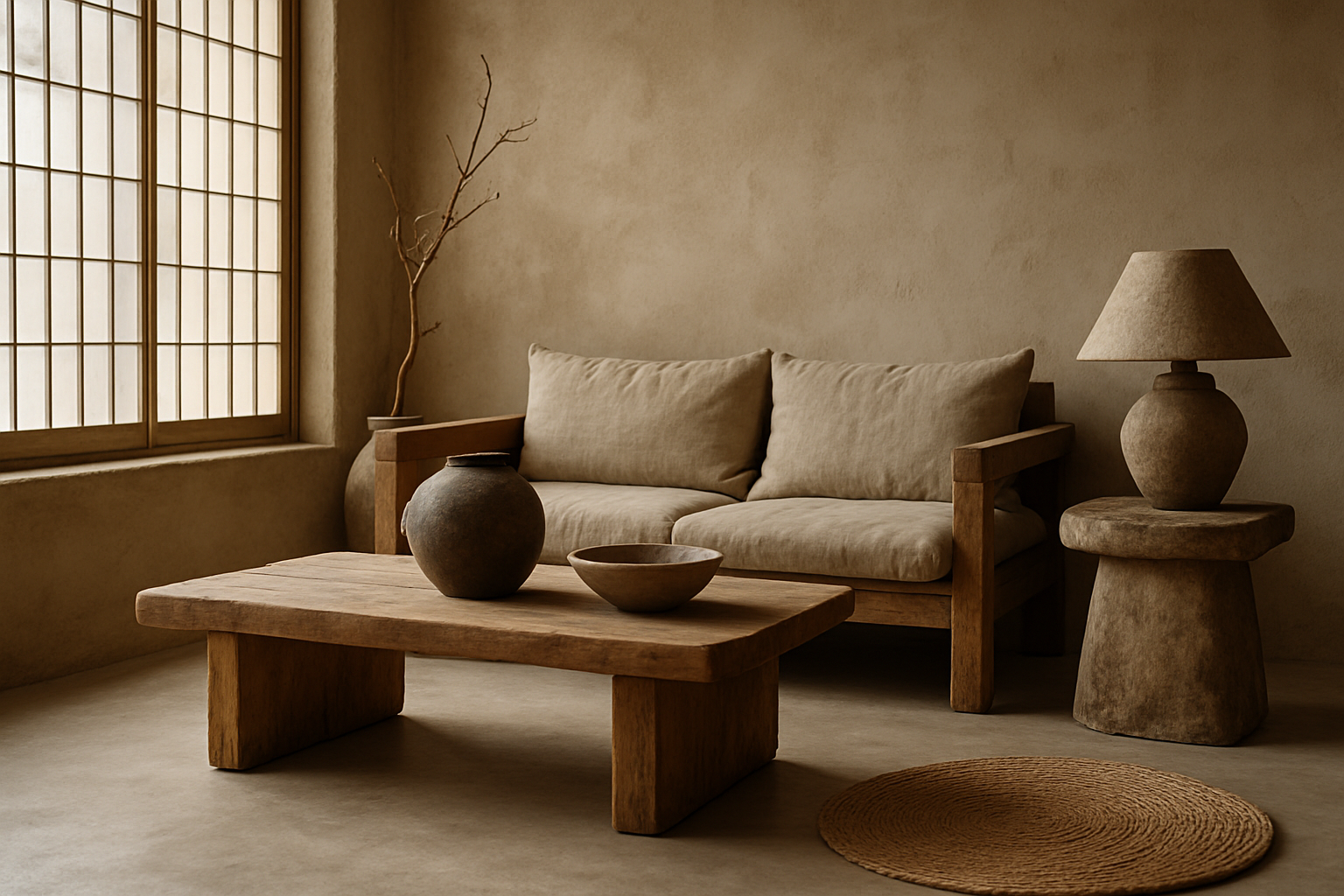Wabi-Sabi: The Japanese Art of Imperfect Beauty in Western Homes
In the ever-evolving world of interior design, a quiet revolution is taking place. Wabi-sabi, an ancient Japanese philosophy celebrating imperfection and transience, is making its mark on Western homes. This centuries-old aesthetic is not just a design trend, but a way of life that encourages us to find beauty in the flawed, the aged, and the incomplete.

The Roots of Wabi-Sabi
Wabi-sabi’s origins can be traced back to 16th century Japan, emerging from Zen Buddhist philosophy. The term combines two concepts: wabi, which refers to the beauty of simplicity and humble living, and sabi, which embraces the passage of time and the marks it leaves behind. Together, they form a worldview that finds profound beauty in the modest, imperfect, and ephemeral aspects of life.
Initially applied to the Japanese tea ceremony, wabi-sabi gradually influenced various aspects of Japanese culture, from architecture to pottery. It stood in stark contrast to the ornate and opulent styles prevalent in other parts of the world, offering a more contemplative and mindful approach to aesthetics.
Wabi-Sabi Principles in Western Interiors
As Western designers and homeowners seek alternatives to mass-produced perfection, wabi-sabi offers a compelling solution. The key principles of this philosophy, when applied to interior design, create spaces that are both visually intriguing and emotionally resonant.
Embrace imperfection: Rather than hiding flaws, wabi-sabi celebrates them. A cracked vase mended with gold (a technique known as kintsugi) becomes a unique piece of art. Weathered wood, patinated metals, and worn textiles are prized for their character and history.
Simplicity and minimalism: Wabi-sabi interiors are uncluttered and serene. Each object serves a purpose or holds deep meaning, avoiding unnecessary ornamentation. This doesn’t mean stark minimalism, but rather a thoughtful curation of items that bring joy and functionality.
Natural materials and textures: Organic materials like wood, stone, clay, and natural fibers are central to wabi-sabi design. These materials age gracefully, developing unique patinas over time that add depth and interest to a space.
Incorporating Wabi-Sabi into Your Home
Adopting wabi-sabi principles doesn’t require a complete home overhaul. Small, meaningful changes can gradually transform your space into a haven of imperfect beauty.
Start with decluttering: Remove items that don’t serve a purpose or bring joy. This creates space for carefully chosen pieces that resonate with wabi-sabi principles.
Introduce natural elements: Incorporate raw wood furniture, stone accents, or clay pottery. These materials connect your home to nature and evolve beautifully over time.
Embrace asymmetry: Move away from perfect symmetry in your arrangements. An off-center wall hanging or an irregularly shaped coffee table can add visual interest and a sense of organic growth to a room.
Choose handmade over mass-produced: Seek out artisanal pieces that show the hand of their maker. These items carry a story and a warmth that machine-made products often lack.
The Color Palette of Wabi-Sabi
While wabi-sabi isn’t strictly defined by color, certain hues lend themselves well to this aesthetic. Earthy, muted tones that evoke nature are typically favored. Think soft greys, warm browns, sage greens, and creamy whites. These colors create a calm, grounded atmosphere that aligns with wabi-sabi’s emphasis on simplicity and connection to the natural world.
Avoid stark whites or bold, synthetic colors. Instead, opt for natural dyes and pigments that may fade or change over time, embracing the wabi-sabi principle of impermanence.
Wabi-Sabi in the Garden
The principles of wabi-sabi extend beautifully into outdoor spaces. A wabi-sabi garden is a far cry from manicured lawns and perfectly pruned hedges. Instead, it celebrates the wild, the overgrown, and the seasonal changes of nature.
Allow plants to grow in their natural forms, embracing the beauty of bare branches in winter and the lushness of summer growth. Incorporate weathered stones, aged wood, and rusted metal elements to add character and a sense of time passing.
Native plants that require minimal intervention are ideal for a wabi-sabi garden. They adapt naturally to local conditions and create habitats for local wildlife, furthering the connection between your home and its environment.
The Psychological Benefits of Wabi-Sabi Interiors
Beyond aesthetics, wabi-sabi interiors can have profound effects on our well-being. In a world that often demands perfection and constant renewal, a wabi-sabi home offers a sanctuary of acceptance and mindfulness.
Living with wabi-sabi principles can reduce stress by removing the pressure to maintain a flawless environment. It encourages a deeper appreciation for the objects in our homes, fostering a sense of gratitude and contentment.
Moreover, the emphasis on natural materials and connection to the passage of time can ground us in the present moment, enhancing our overall sense of peace and well-being.
Wabi-Sabi: A Sustainable Approach to Design
In an era of increasing environmental awareness, wabi-sabi offers a sustainable alternative to disposable design trends. By valuing aged and imperfect items, we reduce the need for constant replacement and redecoration.
The philosophy encourages the use of natural, biodegradable materials and the repurposing of old items. A chipped ceramic bowl becomes a planter, a weathered door transforms into a unique coffee table. This approach not only reduces waste but also creates spaces with depth, character, and personal history.
Conclusion: Finding Beauty in the Imperfect
As we navigate a world that often seems chaotic and unpredictable, wabi-sabi reminds us to find beauty in the flaws, peace in simplicity, and wisdom in age. By bringing these principles into our homes, we create spaces that are not just visually appealing, but emotionally nurturing and philosophically enriching.
Wabi-sabi is more than a design trend; it’s a lens through which we can view our homes and our lives. It teaches us to appreciate the present moment, to find joy in simplicity, and to see the profound beauty in imperfection. As this ancient philosophy continues to influence Western interiors, it offers us all a chance to create homes that are truly reflective of life’s beautiful imperfections.





